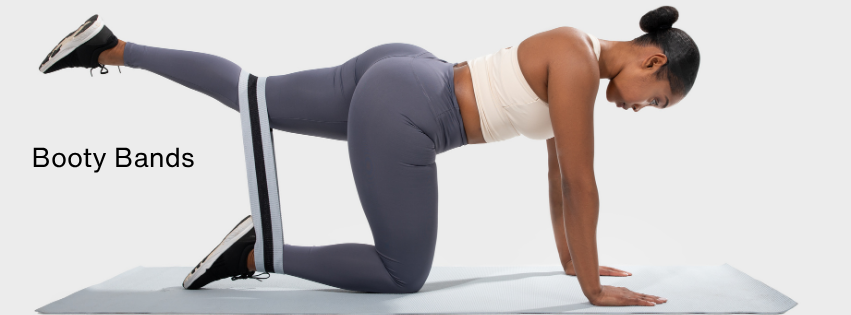Finding the Right Resistance Band for Your Body
Length and Width Matter (When It Comes to Mini-Bands)
If you’ve ever put a mini-band above your knees and thought, “This can’t be good for circulation,” you’re not alone.
Those little latex looped bands are everywhere — from Pilates and yoga studios to functional fitness classes. I use a booty band in every Barre Fusion class I teach. But as someone who wants to be inclusive, I’m always disappointed when there aren’t options for larger or curvier bodies.
The standard looped bands can sometimes feel more like a tourniquet than a training tool. They dig in, roll up, and pull your focus away from what matters most: how the movement feels in your body.
I’ve gathered a few of the most consistently recommended options for inclusive resistance bands — the ones that fit real bodies and move with you. Here’s what I’ve learned so far.
Fit Factors
Length: The short 9-inch mini-bands you often see in gyms were originally designed for upper-body or small-range rehab work, not for glute training. For lower-body or ‘booty band’ work, 12 inches should be the minimum, allowing proper stance width and full range of motion without cutting off circulation. Custom-cut or XL versions (up to 18 inches) provide even more room and are ideal for larger thighs or wider stances.
Width: Look for 3” wide bands (as opposed to 2”) to distribute pressure more evenly so they don’t roll or bite into skin.
Material: Fabric “hip circle” bands tend to stay put and feel softer, while latex loops can roll or pinch.
Sensitivity: If you have a latex allergy or skin irritation, non-latex options like TheraBand are a great alternative.
Booty Band Types
I haven’t personally tested all of these yet — I’m still experimenting and comparing — but these are the most consistently recommended options from other inclusive fitness professionals and everyday exercisers. These booty bands go on sale all the time on Amazon! I ordered mine on a lightning deal for 40% off.
Latex Bands (Traditional Feel)
If you like the familiar stretchy rubber band feel, check out:
Perform Better Mini Band XL – A 12” loop and the standard 2” width.
Set of 5 Resistance Bands - 12" long x 2" wide. Currently the #1 top seller on Amazon for resistance bands.
Wider Booty Band Set - 12" long x 3" wide, making them less likely to roll up.
Non-Latex Bands (Allergy Friendly)
For those with latex sensitivities, here are a few great options to consider.
TheraBand Non-Latex Roll - Cut your own custom length. You’ll need to tie a knot, but you can position it in the front or back to prevent discomfort.
TheraBand Non-Latex Resistance Band Loop – 12" long x 3" wide; designed to stay flat and avoid rolling or digging into your skin.
TheraBand Resistance Band Loops XL - 18" long x 3" wide, giving you more space to step into the loop comfortably.
Fabric Bands (Comfort and Stability)
These are wide, soft, and designed not to roll. Ideal if you’ve ever felt squeezed by traditional rubber bands.
Mark Bell Sling Shot Hip Circle – Single fabric hip circle available in multiple sizes (M–XL). Great for above-knee work like squats and bridges.
Renoj Resistance Bands – Three-pack of fabric booty bands with a grippy interior that stays in place.
Vergali Booty Band - 13" long x 3" wide, offering a bit of extra room and stability.
Why Size Matters
A well-fitting resistance band matters for both form and function. Choosing the right tools for your body is an important part of what makes movement empowering rather than discouraging. Investing in equipment that supports your body and your workout keeps you comfortable, safe and free to move!

